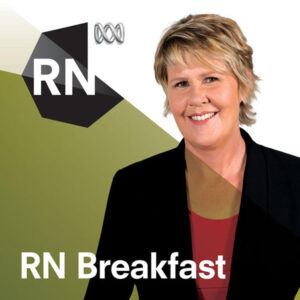 |
The Australian – Click the logo (above) to read the original media story and listen to an interview with Vic Jurskis (below). |

A koala in the wild. Picture: David Geraghty
Australia’s cuddliest native animal is at the centre of fierce scientific dispute, with new research challenging conventional assumptions about koalas, their relationship with the bush and the wisdom of conservation campaigns designed to increase their numbers in the wild.
Vic Jurskis, a respected forester and ecologist and the author of a research paper to be published next week in Wildlife Research, a peer-reviewed, CSIRO journal, dubs it the great koala scam.
He says ignorance about koalas and poor management of our native forests have led to a situation where the decline of koala populations from unsustainable and unnaturally high levels is misinterpreted as a crisis.
A perverse example of this, Mr Jurskis argues, is a NSW government decision to create a 12,000ha flora reserve near his coastal hometown of Eden to protect a species that was not recorded in the area at the time of European settlement. “We don’t need to manage any individual species,’’ he told The Weekend Australian. “We need to manage the bush properly. If we can restore healthy bush we will restore low-density koala populations. The idea that you can take a piece of relatively undisturbed bush and put a line around it and call it a national park and everything is sweet — it just doesn’t work.’’
Koalas are listed as a vulnerable species in Queensland, NSW and the ACT. A NSW policy aimed at boosting koala numbers is informed by a report by NSW chief scientist and engineer Mary O’Kane that found the koala population had fallen significantly. The report cites 2016 modelling done by koala expert Christine Adams-Hosking predicting that Australia’s estimated koala population of 329,000 would shrink by almost a quarter over the next three generations.
“Koalas are one of Australia’s most iconic animals, recognisable around the world,’’ Professor O’Kane says in the introduction to her report. “However, koala populations are under increasing pressure.’’
But Mr Jurskis says there are more koalas than there were at the time of European settlement. He says that far from being a good thing, large koala colonies are a product of stressed and dying trees caused by inept management of native forests, including a lack of frequent, mild burning.
Although koalas can eat 70 species of eucalyptus, they need young leaves for nourishment. This is why koala irruptions — large, fast-breeding colonies — are often found in forests regrown after intensive logging or in dying forests where stressed trees continually producing new foliage. A sign of a healthy eucalypt forest is when koalas are found in sparse numbers, roaming large areas of isolated bush, Mr Jurskis says. A happy koala is not photographed by tourists along Victoria’s Great Ocean Road — he’s the one you never see.
Professor O’Kane was not available to discuss Mr Jurskis’s research.
Jack Pascoe, the manager of the Conservation Ecology Centre at Victoria’s Cape Otway, has spent the past five years responding to a koala irruption in a manna gum plantation in the Otway Ranges, home to Australia’s largest koala population.
He agrees many forests in southeast Australia are poorly managed but points to a lack of a predator as another key determinant of koala populations.
“It is a bit more complicated than saying the forests are crook and koalas take advantage of it,’’ Dr Pascoe said.
“My feeling is we could do everything in the world to make the forests healthier but in some places, koalas left to their own devices will overpopulate.’’
Ecological historian argues koala population decline is ‘not a crisis’
 |
RN Breakfast Interview – November 27, 2017 with Fran Kelly Fran Kelly hosts the radio program RN Breakfast. |
You’ve likely heard the reports in recent years that populations of one of our best-loved national icons — the koala — are in worrying decline.
The tree-dwelling marsupial is listed as vulnerable in Queensland, NSW and the ACT.
In fact, a report released by WWF-Australia last May warned that in areas such as the Koala Coast south-east of Brisbane and the Pilliga Forests area in northern NSW, populations are facing extinction.
It’s a situation that has tugged at the heart strings of animal lovers and prompted several conservation campaigns.
But, one experienced forester and ecological historian says we’ve got it all wrong.
Vic Jurskis tells RN Breakfast that this decline is not a crisis, but rather that koala populations are coming down from unsustainable and unnaturally high levels.

